1. UNEP Frontiers 2025 Report on Legacy Pollutants – Environment
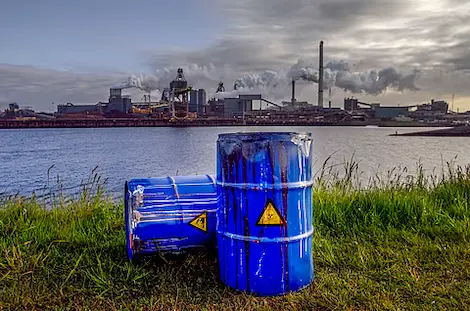
Why in News?
The United Nations Environment Programme (UNEP) has released the Frontiers 2025 Report titled “The Weight of Time”, highlighting the growing risk of legacy pollutants being released into the environment due to climate change-induced flooding.
Key Concepts and Definitions
What are Legacy Pollutants?
Legacy pollutants are toxic substances that:
- Were widely used in the past,
- Have since been banned or restricted,
- But continue to persist in the environment for decades due to their chemical stability and resistance to degradation.
These pollutants remain in soil, sediments, and water bodies and can be remobilized by natural events such as floods, droughts, and coastal erosion.
Examples of Legacy Pollutants
Heavy Metals:
- Lead, Mercury, Cadmium, Arsenic
Persistent Organic Pollutants (POPs):
- Pesticides: DDT, Aldrin, Endrin, Chlordane
- Industrial Chemicals: PCBs (Polychlorinated Biphenyls), Dioxins, Furans
- By-products from waste incineration and metal smelting
Health Hazards of Legacy Pollutants
Even at low exposure levels, these substances can cause:
- Neurotoxicity: Damage to the nervous system
- Immunotoxicity: Weakening of the immune system
- Hepatotoxicity: Liver damage
- Reproductive Toxicity: Infertility, birth defects
- Carcinogenicity: Various types of cancer
- Endocrine Disruption: Hormonal imbalance affecting growth, metabolism, and reproduction
Climate Change Link
Flooding events caused by climate change are disturbing sediments in rivers and coasts, causing toxic pollutants to re-enter the environment, where they can:
- Contaminate water supplies
- Enter the food chain
- Threaten biodiversity and human health
India-Specific Observations
- Ganga, Hindon, and Vaigai Rivers: High levels of Cadmium, a known endocrine disruptor that affects kidney, bone, and reproductive health.
- Ayad River: Also showed significant levels of hazardous chemicals.
India has multiple legacy industrial and agricultural zones where chemicals have leached into the environment, posing long-term risks.
Broader Implications
- Urgent need for legacy waste mapping and remediation.
- Adoption of green technologies and safer substitutes.
- Integration of pollution control in climate resilience planning.
- Strengthening environmental regulations and compliance monitoring.
Exam Connect – Possible Questions
Prelims
1. Which of the following is a characteristic feature of legacy pollutants?
A. They degrade rapidly in the environment
B. They are beneficial for crop growth
C. They persist for decades and pose health risks
D. They are only found in developed countries
Answer: C. They persist for decades and pose health risks
2. Persistent Organic Pollutants (POPs) include which of the following?
1.DDT
2.Polychlorinated Biphenyls (PCBs)
3. Dioxins
4. Ozone
A. 1, 2 and 3 only
B. 2 and 4 only
C. 1 and 4 only
D. 1, 2, 3 and 4
Answer: A. 1, 2 and 3 only
Mains
1. What are legacy pollutants? Discuss their sources, health impacts, and the challenges they pose in the context of climate change-induced flooding.
2. Examine India’s preparedness to manage the threat of legacy pollutants in the wake of increasing climate disasters. Suggest policy and technological interventions.
2. Yamuna River Rejuvenation – Environment
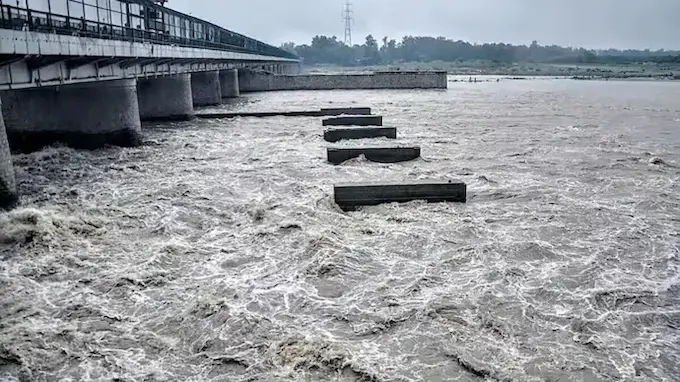
Why in News?
The newly elected government in Delhi is prioritizing the cleaning of the Yamuna River, aligning with the Centre’s flagship Namami Gange Programme (NGP). This initiative is not just environmental but a governance and federalism challenge, making it a test case for interstate collaboration in river rejuvenation.
Key Concepts & Context
Namami Gange Programme (NGP)
- Launched: 2014 by the Government of India.
- Objective: Rejuvenation of the Ganga River and its tributaries, including the Yamuna.
- Core Strategy: Shifting from regulatory pollution control to mission-based river health improvement.
Significance of Yamuna River
- Lifeline of Delhi: Provides water, sustains ecosystems, supports livelihoods.
- Pollution Hotspot: Over 80% of Yamuna’s pollution in Delhi comes from untreated and uncaptured sewage.
- The Yamuna is a major tributary of the Ganga, and its rejuvenation is essential for the success of the NGP.
Structural Innovations under NGP
- National Ganga Council: Apex body chaired by the Prime Minister.
- Empowered Task Forces & River Basin Authorities: Enable coordination between ministries and states.
- Scientific Inputs: Adopts a river basin planning model inspired by Europe’s International Commission for the Protection of the Rhine (ICPR).
River basin planning is a holistic approach that manages water, pollution, land use, and stakeholder interests across the entire catchment of a river.
Urban Governance & Pollution Management
- In Delhi, urban planning failure has led to severe sewage discharge into the Yamuna.
- Major issues:
- Poor sewerage infrastructure
- Lack of household sewer connections
- Overflowing and under-capacity STPs (Sewage Treatment Plants)
Delhi as a Model/Test Case:
- The rejuvenation of the Yamuna in Delhi can serve as a template for other river cities.
- Demonstrates the need for cooperation between the Centre and states, urban governance reform, and citizen engagement.
Comparative Global Perspective
- European Models (e.g., Rhine) have shown that:
- Subnational collaboration (like between Germany, Switzerland, Netherlands) is vital.
- Data-sharing, institutional clarity, and shared financing contribute to success.
- India must adapt these learnings to its federal context and political diversity.
Key Challenges Highlighted
- Low state participation in river health missions.
- Lack of integrated sewage and waste water planning.
- Need for institutional reform and data-driven decision-making.
Broader Implications
- Environmental Federalism: Strengthening cooperative federalism in environmental matters.
- Sustainable Water Governance: Aligning development, ecological needs, and public health.
- Replicable Model: Delhi’s experience could be scaled to other rivers, especially in urban belts.
Exam Connect – Possible Questions
Prelims
1. The Namami Gange Programme is primarily aimed at:
A. Promoting inland waterways on the Ganga
B. Constructing new dams on the Ganga basin
C.River rejuvenation through pollution control and ecological restoration
D. Rainwater harvesting in Ganga basin villages
Answer: C. River rejuvenation through pollution control and ecological restoration
2. Which of the following statements is/are correct about the Yamuna River?
1.It is a left-bank tributary of the Ganga.
2. Over 80% of its pollution in Delhi is due to untreated sewage.
3. It originates from the Yamunotri Glacier in Uttarakhand.
A. 1 and 3 only
B. 2 and 3 only
C. 1, 2 and 3
D. 2 only
Answer: B. 2 and 3 only
(Yamuna is a right-bank tributary of Ganga)
Mains
1. Discuss the significance of the Namami Gange Programme in addressing urban river pollution in India. How can Delhi’s approach to Yamuna rejuvenation serve as a model for other Indian cities?
2. Critically evaluate the role of cooperative federalism in India’s river rejuvenation programmes. Suggest ways to improve subnational coordination in environmental governance.
3. TALASH Initiative – Empowering Tribal Students – Indian Society
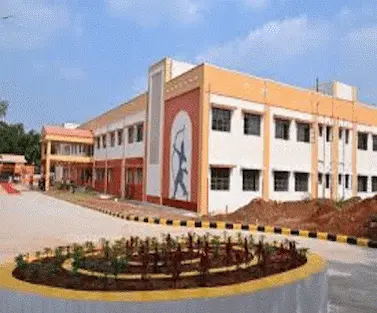
Why in News?
The National Education Society for Tribal Students (NESTS), in collaboration with UNICEF India, has launched the TALASH initiative—India’s first national programme focused on the holistic development of tribal students enrolled in Eklavya Model Residential Schools (EMRSs).
What is TALASH?
TALASH stands for Tribal Aptitude, Life Skills and Self-Esteem Hub.
It aims to empower tribal youth through:
- Psychosocial support
- Life skills development
- Career guidance
- Self-awareness and self-esteem building
Key Features of the TALASH Initiative
1. Holistic Student Development
- Encourages self-awareness, emotional resilience, and life skills.
- Helps students explore their identity and ambitions beyond academic achievement.
2. Psychometric Assessments
- Inspired by NCERT’s ‘Tamanna’, these are aptitude tests to help students:
- Discover interests
- Recognize abilities and personality traits
- Output: Career Cards suggesting suitable professions based on test results.
3. Career Counselling
- Structured sessions for career clarity and goal setting.
- Supports informed decision-making aligned with personal strengths and aspirations.
4. Life Skills & Self-Esteem Modules
- Practical sessions on:
- Communication skills
- Problem-solving
- Emotional regulation
- Confidence-building
5. E-Learning & Teacher Training
- Dedicated online portal for training educators.
- So far, 189 teachers across 75 EMRSs have been trained to implement TALASH modules.
- Teachers act as mentors, guiding students in their personal and career journeys.
Scale & Outreach
- Targeted for 1,38,336 tribal students across 28 States and 8 Union Territories.
- Aim: Universal implementation in all EMRSs by the end of 2025.
Policy Alignment
- Supports the National Education Policy (NEP) 2020 goals of:
- Inclusive and equitable education
- Competency-based and student-centric learning
- Integrating social-emotional learning into mainstream education
Broader Societal Significance
- Tackles historical neglect and educational marginalization of tribal communities.
- Encourages socio-emotional development alongside academics.
- Empowers tribal youth to break systemic cycles of disadvantage and access mainstream opportunities.
Exam Connect – Possible Questions
Prelims
1. The recently launched TALASH initiative is primarily aimed at:
A. Promoting tribal arts and crafts
B. Conducting genetic mapping of tribal populations
C. Holistic development and career counselling for tribal students
D. Tribal forest rights documentation
Answer: C. Holistic development and career counselling for tribal students
2. Consider the following statements:
1.TALASH initiative is implemented by NCERT and UNESCO.
2. It is designed for tribal students studying in Eklavya Model Residential Schools.
3.The initiative includes psychometric testing and life skills training.
Which of the above statements is/are correct?
A. 1 and 2 only
B. 2 and 3 only
C. 1 and 3 only
D. All three
Answer: B. 2 and 3 only
(Statement 1 is incorrect – it’s a NESTS and UNICEF India initiative)
Mains
1. Discuss the significance of the TALASH initiative in promoting inclusive and equitable education among tribal communities in India. How does it align with the objectives of NEP 2020?
2. Tribal students often face barriers not just in access to education but also in emotional and social development. Evaluate how psychosocial and career-oriented initiatives like TALASH can transform tribal education outcomes.
4. Zonal Councils – Platforms for Intergovernmental Cooperation – Polity
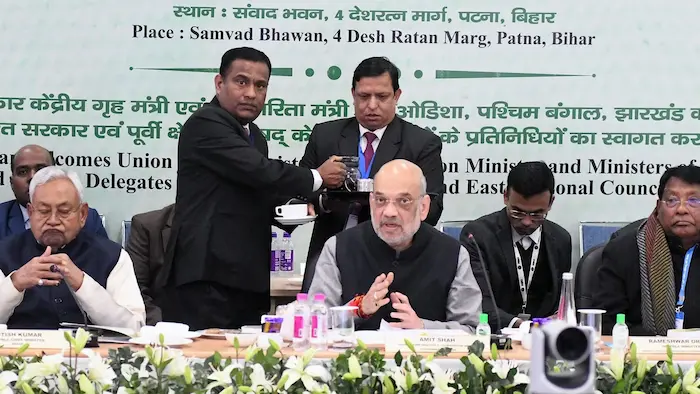
Why in News?
The Union Home Minister recently stated that 83% of issues discussed in Zonal Council meetings have been successfully resolved, underlining the effectiveness of these statutory bodies in enhancing Centre-State and Inter-State cooperation.
What Are Zonal Councils?
Definition & Origin
- Statutory bodies established under the States Reorganisation Act, 1956 (Part III).
- Designed to promote cooperation and coordination among states, union territories, and the central government.
Nature:
- Not Constitutional bodies
- Advisory in function, but play a key role in consensus-building and dispute resolution
Zonal Structure of India
India is divided into five zonal councils, with a separate council for the North-East.
| Zonal Council | Member States/UTs |
|---|---|
| Northern Zonal Council | Haryana, Himachal Pradesh, Jammu & Kashmir, Punjab, Rajasthan, Delhi, Chandigarh |
| Central Zonal Council | Chhattisgarh, Uttarakhand, Uttar Pradesh, Madhya Pradesh |
| Eastern Zonal Council | Bihar, Jharkhand, Odisha, West Bengal |
| Western Zonal Council | Goa, Gujarat, Maharashtra, Dadra & Nagar Haveli, Daman & Diu |
| Southern Zonal Council | Andhra Pradesh, Karnataka, Kerala, Tamil Nadu, Puducherry |
| North-Eastern Council (NEC) | Assam, Arunachal Pradesh, Nagaland, Manipur, Meghalaya, Mizoram, Tripura, Sikkim |
Note: Andaman & Nicobar Islands and Lakshadweep are special invitees, not full members.
Basis for Zoning
Zones are formed based on:
- Natural divisions
- Cultural and linguistic affinity
- River systems
- Security and administrative needs
Composition and Governance Structure
| Position | Description |
|---|---|
| Chairperson | Union Home Minister |
| Vice-Chairperson | Rotates annually among the Chief Ministers of member states |
| Members | Chief Ministers & two nominated ministers from each state in the zone |
| Secretariat | Ministry of Home Affairs (Inter-State Council Secretariat) |
| Standing Committees | Prepare agenda and facilitate follow-ups |
Functions and Responsibilities
- Promote intergovernmental dialogue on issues of common interest
- Resolve border and resource disputes among states
- Coordinate on:
- Interstate transport and infrastructure
- Water-sharing issues
- Linguistic minorities
- Security and law & order coordination
- Facilitate joint planning for economic and social development
Although advisory, their recommendations often lead to practical implementation due to political consensus.
Recent Developments and Significance
- The North-Eastern Council was restructured in 2018, integrating the DoNER Ministry for better regional focus.
- Under recent governments, especially post-2014, Zonal Councils have become more action-oriented and result-driven.
- 83% resolution rate indicates increased political will and administrative follow-through.
- Encourage cooperative federalism by addressing conflicts through dialogue instead of litigation.
Broader Constitutional Context
- Article 263 of the Constitution allows the President to establish councils for inter-state cooperation (e.g., Inter-State Council), but Zonal Councils are statutory.
- They complement mechanisms like:
- Inter-State Council
- Finance Commission recommendations
- River water tribunals
Exam Connect – Possible Questions
Prelims
1. Zonal Councils in India were established under:
A. Article 263 of the Constitution
B. Government of India Act, 1935
C. States Reorganisation Act, 1956
D. Inter-State Council Act, 1980
Answer: C. States Reorganisation Act, 1956
2. Which of the following statements about Zonal Councils is/are correct?
1.They are constitutional bodies.
2.The Union Home Minister is the Chairperson of all Zonal Councils.
3.North-Eastern Council is one of the five Zonal Councils.
A. 1 and 2 only
B. 2 only
C. 2 and 3 only
D. All of the above
Answer: B. 2 only
(Statement 1 is incorrect – they are statutory; Statement 3 is incorrect – NEC is separate)
Mains
1. Discuss the significance of Zonal Councils in promoting cooperative federalism in India. How effective have they been in addressing inter-state disputes and regional development challenges?
2. Evaluate the role of Zonal Councils in the Indian federal structure. Compare their functioning with other mechanisms like the Inter-State Council.
5. Supreme Court on Bihar Electoral Roll Revision – Polity
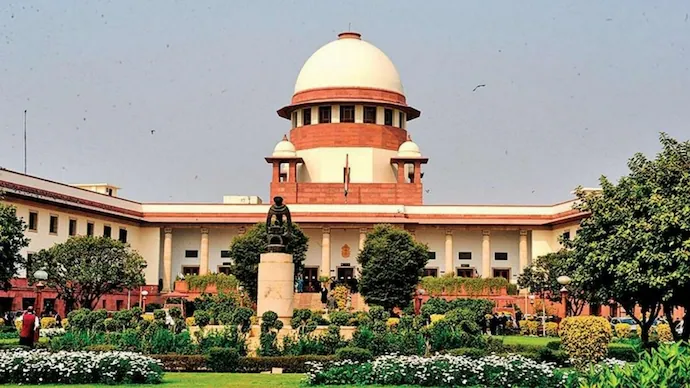
Why in News?
The Supreme Court of India has refused to stay the Special Intensive Revision (SIR) of electoral rolls being conducted in Bihar by the Election Commission of India (ECI) ahead of the upcoming Assembly elections. However, the Court acknowledged concerns raised by petitioners and scheduled a detailed hearing on July 28.
Key Points from the Supreme Court’s Intervention
- SIR will proceed as planned, maintaining the ECI’s constitutional authority.
- Petitioners raised concerns about:
- Timing of the revision (too close to elections)
- Document burden and potential exclusion of marginalized groups
- The Court advised the ECI to consider flexible verification using Aadhaar, voter ID, or ration cards to prevent voter disenfranchisement.
Background: What Is Special Intensive Revision (SIR)?
- A house-to-house verification process by Electoral Registration Officers (EROs).
- Voters on the 2003 electoral roll only need to submit an extract as proof.
- New or recently added voters must provide multiple ID documents to validate:
- Citizenship
- Age
- Residency
Core Issues Raised
1. Timing and Fairness
- Critics argue the SIR is too close to the elections, potentially affecting participation.
- Risk of delays and legal uncertainty before polls.
2. Document Burden
- Requirement of multiple documents may exclude poor, marginalized, rural populations, especially:
- Women without Aadhaar
- Daily wage workers without stable addresses
- Tribal and Dalit communities
3. Right to Vote vs. Verification Process
- The revision process must balance:
- Ensuring accuracy in electoral rolls
- Protecting universal suffrage as a constitutional right
Election Commission’s Position
- Defended the process as necessary to update and cleanse the voter list.
- Clarified that:
- Aadhaar is not mandatory for electoral verification.
- The list of documents is not exhaustive—alternative proofs are accepted.
- Public outreach campaigns are being conducted to raise awareness.
Supreme Court’s Balanced Approach
- Recognized ECI’s constitutional autonomy under Article 324.
- Stressed the importance of transparency, inclusivity, and procedural fairness.
- Aims to ensure that no eligible voter is disenfranchised due to bureaucratic hurdles.
Constitutional & Legal Context
- Article 326: Right to vote for every citizen aged 18+
- Article 324: Powers of the Election Commission to supervise and conduct elections
- Representation of the People Act, 1950: Legal framework for preparing and revising electoral rolls
Broader Implications
- Highlights the fragility of electoral inclusion in the absence of proper documentation.
- Sparks debate on whether Aadhaar-Voter ID linkage should be made universal or optional.
- Raises the issue of digital and document inequality, particularly in rural India.
Exam Connect – Possible Questions
Prelims
1. Which of the following Articles of the Constitution empowers the Election Commission to supervise elections in India?
A. Article 326
B. Article 80
C. Article 324
D. Article 243K
Answer: C. Article 324
2. In the context of electoral roll revisions, which of the following statements is/are correct?
1. adhaar is mandatory for verifying citizenship under the Representation of the People Act.
2. Special Intensive Revisions are conducted through house-to-house verification.
3. The Election Commission is a constitutional body.
A. 1 and 2 only
B. 2 and 3 only
C. 1 and 3 only
D. All of the above
Answer: B. 2 and 3 only
(Statement 1 is incorrect – Aadhaar is not mandatory for citizenship verification.)
Mains
1. Examine the constitutional and legal framework governing electoral roll revisions in India. In light of the Bihar case, analyze the challenges of balancing electoral integrity with universal suffrage.
2. Discuss the role of the Election Commission of India in ensuring fair and inclusive elections. Should Aadhaar be made mandatory for voter registration? Give arguments for and against.
6. Bridge Too Far: The Urgent Need for Infrastructure Audits – Economy

Why in News?
On July 9, 2024, a 40-year-old bridge collapsed in Vadodara, Gujarat, plunging multiple vehicles into the Mahisagar River and resulting in 18 deaths. This tragic incident has reignited concerns over India’s neglected and ageing infrastructure.
Key Issues in India’s Infrastructure Failures
1. Ageing and Outdated Infrastructure
- Many bridges and public structures have exceeded their design life.
- Example: Morbi Suspension Bridge collapse (2022) due to inadequate retrofitting.
2. Overuse & Overload
- Old infrastructure designed for lighter loads is now stressed by:
- Increased vehicular density
- Urban-industrial traffic
- Example: Indrayani pedestrian bridge collapse, Pune (2024)
3. Neglect and Poor Maintenance
- Routine inspections are either ignored or never conducted.
- Public complaints are often neglected, as seen in Vadodara.
4. Institutional Inefficiency
- Municipalities in Tier-2 and Tier-3 cities are often:
- Understaffed
- Underfunded
- Overburdened
5. Lack of Accountability
- Failure analysis reports (like Mizoram railway bridge girder collapse, 2023) are rarely made public.
- No systemic learning or corrective action takes place.
Understanding Peri-Urban Infrastructure
Definition
Peri-urban areas are transitional zones between rural and urban spaces, often lacking formal governance and zoning regulations.
Challenges in Peri-Urban Infrastructure
| Issue | Explanation |
|---|---|
| Unregulated expansion | Construction occurs without formal approvals or structural evaluations |
| Jurisdictional ambiguity | Unclear whether governance falls under municipal or rural bodies |
| Low visibility | Media and political attention is focused on urban cores, neglecting fringe areas |
These zones house growing populations but suffer from fragile infrastructure systems.
Solutions Underway – Government Interventions
AMRUT 2.0 (Atal Mission for Rejuvenation and Urban Transformation)
- Focus: Retrofitting existing infrastructure in urban and peri-urban areas.
- Example: Agra upgraded stormwater systems to prevent collapse and flooding.
UIDF (Urban Infrastructure Development Fund)
- Offers low-cost loans for infrastructure repair in Tier-2 and Tier-3 cities.
- Madhya Pradesh used funds to repair strained urban infrastructure.
Digital Monitoring Tools
- Geo-tagging of assets
- AI and IoT-enabled monitoring for predictive maintenance
- Example: Bhubaneswar Smart City dashboard tracks real-time infrastructure health
Audit and Governance Gaps
| Problem | Example |
|---|---|
| Jurisdictional overlap | Post-collapse audit delays in Hyderabad flyover accident |
| Political interference | Inquiries diluted after the Kolkata Vivekananda flyover collapse (2016) |
Way Forward: Comprehensive Reform Needed
1. Unified National Audit Authority
- Create an independent body for infrastructure safety audits.
- Mandate post-collapse investigations and public disclosure of findings.
2. Real-time Infrastructure Monitoring
- Use GIS mapping, AI, and IoT sensors to:
- Track stress levels in structures
- Schedule preventive maintenance
3. Legal Accountability
- Make audit findings legally enforceable.
- Introduce penalties for ignoring maintenance responsibilities.
Exam Connect – Possible Questions
Prelims
1. Which of the following correctly describes ‘Peri-Urban Infrastructure’?
A. Infrastructure in fully developed urban centers
B. Infrastructure in remote tribal regions
C. Infrastructure in transitional zones between urban and rural areas
D. Infrastructure built under Smart Cities Mission
Answer: C. Infrastructure in transitional zones between urban and rural areas
2. The UIDF and AMRUT 2.0 schemes are primarily aimed at:
1.Strengthening rural agricultural markets
2. Improving urban infrastructure and retrofitting
3.Enabling financial support for Tier-2 and Tier-3 cities
4. Promoting smart metering for energy systems
Choose the correct answer:
A. 1 and 2 only
B. 2 and 3 only
C. 1, 2 and 4 only
D. All of the above
Answer: B. 2 and 3 only
Mains
1. Infrastructure collapses in India are often the result of systemic failures rather than isolated events. Critically examine the causes and suggest reforms to prevent such disasters, especially in peri-urban areas.
2. Discuss the role of AMRUT 2.0 and UIDF in addressing India’s aging and overburdened infrastructure. How can digital technologies enhance infrastructure safety and governance?
7. Protecting and Preserving Voting Rights in India – Polity
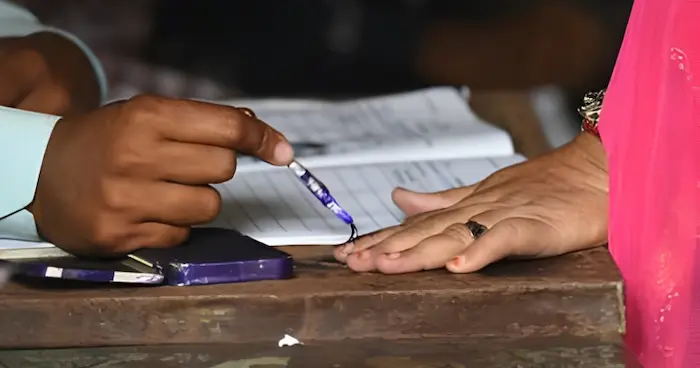
Why in News?
The Supreme Court of India has directed the Election Commission (ECI) to accept Aadhaar, voter ID, and ration cards for updating Bihar’s electoral rolls. This reaffirms the importance of voter inclusivity and procedural fairness in India’s democracy.
India’s Commitment to Universal Adult Suffrage
Constitutional Basis
- Article 326 of the Constitution guarantees universal adult suffrage for every Indian citizen aged 18 years or above, irrespective of:
- Gender
- Religion
- Caste
- Education
- Property ownership
- Voting age lowered from 21 to 18 via the 61st Constitutional Amendment (1989).
India adopted universal suffrage from the beginning (1950), unlike many Western democracies where voting rights were gradually extended.
Statutory Framework for Voting Rights
| Law | Key Provisions |
|---|---|
| Representation of the People Act, 1950 | Electoral roll preparation, voter registration rules |
| Representation of the People Act, 1951 | Conduct of elections, electoral offences, disqualifications |
Judicial Interpretation of Voting Rights
| Case | Key Takeaway |
|---|---|
| Kuldip Nayar v. Union of India (2006) | Voting is a statutory right, not a fundamental or constitutional right |
| Anoop Baranwal v. Union of India (2023) | Reaffirmed the statutory nature of voting rights |
| Lal Babu Hussein v. ERO (1995) | Citizens cannot be unfairly asked to prove citizenship; past rolls must be respected |
Justice Ajay Rastogi’s dissent in Anoop Baranwal hinted at a link to fundamental rights, but it was not upheld.
Administrative Innovations for Voter Inclusion
- To ensure electoral participation among 173 million voters (many illiterate), CEC Sukumar Sen introduced:
- Election symbols for easier identification of candidates.
- Manual voter education at polling booths.
Importance of Accurate Electoral Rolls
- Ensures free and fair elections and upholds the principle of “One Person, One Vote”
- Key issues include:
- Omissions (genuine voters left out)
- Duplicate entries
- Ineligible voters (e.g., deceased, underage)
Continuous roll revision is the ECI’s duty under RPA 1950.
Definition of “Ordinary Resident”
- As per RPA 1950, a voter must be an “ordinary resident” of the constituency.
- Helps prevent:
- Bogus registrations
- Electoral migration and manipulation
Special Voter Categories
| Category | Voting Mechanism |
|---|---|
| Service Voters (Army, Govt abroad) | Postal Ballots |
| Overseas Indians (NRI voters) | Can register under Section 20A of RPA 1950, but must vote in person in India (no online or postal voting yet) |
Recent Issue: Citizenship Verification in Bihar
- The Special Intensive Revision (SIR) required multiple documents to verify citizenship.
- Petitioners feared exclusion of marginalized groups lacking formal IDs.
- SC ruling:
- Directed acceptance of Aadhaar, Voter ID, Ration Card as valid for roll updates.
- Emphasized procedural fairness and inclusiveness in voter registration.
Exam Connect – Possible Questions
Prelims
1. Under which Article of the Indian Constitution is universal adult suffrage guaranteed?
A. Article 324
B. Article 326
C. Article 14
D. Article 80
Answer: B. Article 326
2. Consider the following statements regarding voting rights in India:
1.Voting is a fundamental right under Article 21.
2.The Representation of the People Act, 1950 deals with electoral roll preparation.
3.The voting age was reduced from 21 to 18 by the 42nd Amendment.
Which of the statements is/are correct?
A. 1 and 2 only
B. 2 only
C. 2 and 3 only
D. 1, 2 and 3
Answer: B. 2 only
(Statement 1 is incorrect – voting is a statutory right. Statement 3 is incorrect – the correct amendment is the 61st, not the 42nd.)
Mains
1. Discuss the constitutional and legal framework of voting rights in India. How does the Supreme Court’s intervention in the Bihar voter list update reflect the balance between electoral integrity and voter inclusion?
2. In light of judicial decisions and administrative challenges, examine whether the right to vote should be elevated from a statutory right to a fundamental right in India.

